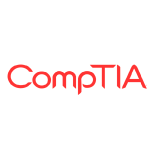COMPTIA A+ CERTIFICATION EXAM: CORE 2 (220-1002)
Course Overview
CompTIA A+ certified professionals are proven problem solvers. They support today’s core technologies from security to cloud to data management and more. CompTIA A+ is the industry standard for launching IT careers into today’s digital world. It is the only industry recognized credential with performance-based items to prove pros can think on their feet to perform critical IT support tasks in the moment. It is trusted by employers around the world to identify the go-to person in endpoint management and technical support roles. CompTIA A+ is regularly re-invented by IT experts to ensure that it validates core skills and abilities demanded in the workplace.
The Official CompTIA® A+® Core 2 (Exam 220-1002) course provides the background knowledge and skills you will require to be a successful A+ technician. It will help you prepare to take the CompTIA A+ Core Series certification examination (exam number 220-1002), in order to become a CompTIA A+ Certified Professional.

Course Objectives
In this course, you will install, configure, optimize, troubleshoot, repair, upgrade, and perform preventive maintenance on personal computers, digital devices, and operating systems. You will:
- Support operating systems.
- Install, configure, and maintain operating systems.
- Maintain and troubleshoot Microsoft Windows.
- Configure and troubleshoot network connections.
- Manage users, workstations, and shared resources.
- Implement physical security.
- Secure workstations and data.
- Troubleshoot workstation security issues.
- Support and troubleshoot mobile devices.
- Implement operational procedures.
Course Prequisites
To learn with the CompTIA A+ Certification Study Guides and prepare for your exam, you should have successfully completed the CompTIA IT Fundamentals course or have some basic experience using a PC, Windows, and browsing the web. Specifically, we recommend that you have the following skills and knowledge before starting this course:
- Recognize the main components of a PC as well as storage media such as USB drives and DVD.
- Start the computer and navigate the operating system desktop.
- Use Windows Explorer to create directories and subdirectories and manage files.
- Use a web browser to view websites.
Target Audience
This course is designed for individuals who have basic computer user skills and who are interested in obtaining a job as an entry-level IT technician. This course is also designed for students who are seeking the CompTIA A+ certification and who want to prepare for the CompTIA A+ Core 2 220-1002 Certification Exam.
Course Outline
Lesson 1: Supporting Operating Systems
- Topic A: Identify Common Operating Systems
- Topic B: Use Windows Features and Tools
- Topic C: Manage Files in Windows
- Topic D: Manage Disks in Windows
- Topic E: Manage Devices in Windows
Lesson 2: Installing, Configuring, and Maintaining Operating Systems
- Topic A: Configure and Use Linux
- Topic B: Configure and Use macOS
- Topic C: Install and Upgrade Operating Systems
- Topic D: Maintain OSs
Lesson 3: Maintaining and Troubleshooting Microsoft Windows
- Topic A: Install and Manage Windows Applications
- Topic B: Manage Windows Performance
- Topic C: Troubleshoot Windows
Lesson 4: Configuring and Troubleshooting Networks
- Topic A: Configure Network Connection Settings
- Topic B: Install and Configure SOHO Networks
- Topic C: Configure SOHO Network Security
- Topic D: Configure Remote Access
- Topic E: Troubleshoot Network Connections
Lesson 5: Managing Users, Workstations, and Shared Resources
- Topic A: Manage Users
- Topic B: Configure Shared Resources
- Topic C: Configure Active Directory Accounts and Policies
Lesson 6: Security Concepts
- Topic A: Logical Security Concepts
- Topic B: Threats and Vulnerabilities
- Topic C: Physical Security Measures
Lesson 7: Securing Workstations and Data
- Topic A: Implement Security Best Practices
- Topic B: Implement Data Protection Policies
- Topic C: Protect Data During Incident Response
Lesson 8: Troubleshooting Workstation Security Issues
- Topic A: Detect, Remove, and Prevent Malware
- Topic B: Troubleshoot Common Workstation Security Issues
Lesson 9: Supporting and Troubleshooting Mobile Devices
- Topic A: Secure Mobile Devices
- Topic B: Troubleshoot Mobile Device Issues
Lesson 10: Implementing Operational Procedures
- Topic A: Use Appropriate Safety Procedures
- Topic B: Environmental Impacts and Controls
- Topic C: Create and Maintain Documentation
- Topic D: Use Basic Change Management Best Practices
- Topic E: Implement Disaster Prevention and Recovery Methods
- Topic F: Basic Scripting Concepts
- Topic G: Professionalism and Communication
What Our Students Have to Say


